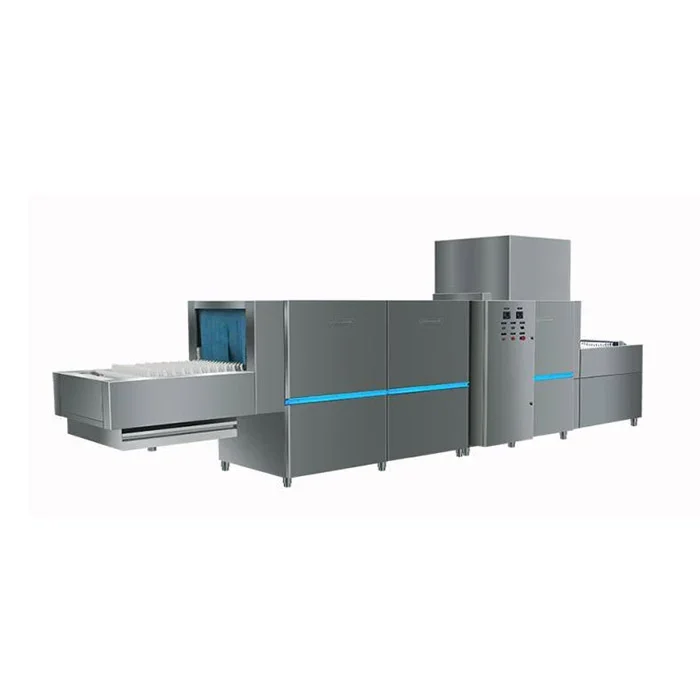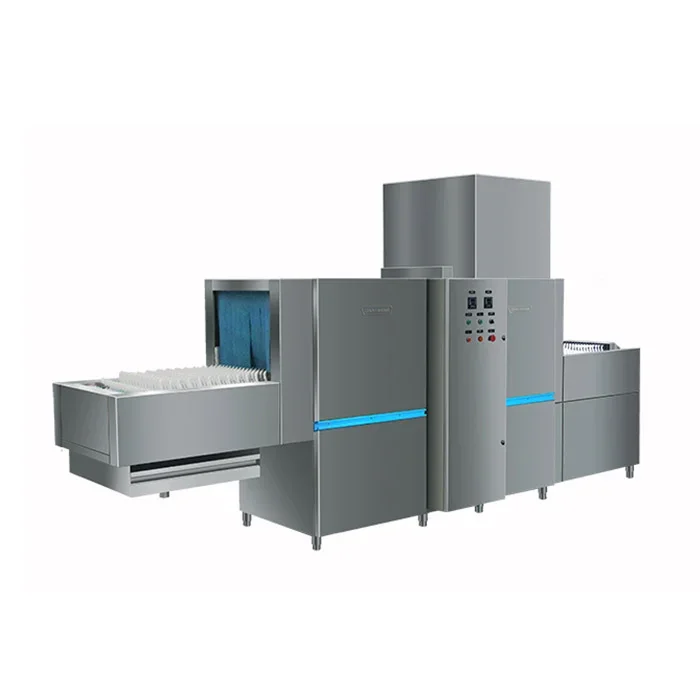Commercial kitchens and food service establishments rely on efficient dishwashing equipment to handle large volumes of dishes, utensils, and cookware. Flight type dishwashers have become a popular choice due to their high capacity and automated operation. In this blog, we will explore the working principle of flight type dishwashers, providing a comprehensive understanding of their operation, benefits, and maintenance requirements.
I. Introduction to Flight Type Dishwashers
Overview:
Flight type dishwashers are conveyor-based dishwashing systems designed for high-volume dishwashing applications. They are commonly used in restaurants, hotels, cafeterias, and other food service establishments.
High Capacity:
One of the primary advantages of flight type dishwashers is their ability to handle large quantities of dishes in a continuous process. This makes them ideal for busy kitchens that require rapid and efficient dishwashing.

II. Working Principle of Flight Type Dishwashers
Loading:
Dishes, trays, and utensils are loaded onto the conveyor belt at the entry point of the dishwasher. The items are spaced apart to ensure proper water flow and optimal cleaning.
Pre-Washing:
As the dishes move along the conveyor belt, they pass through a pre-washing zone. Here, powerful jets of hot water and detergent are sprayed onto the items to remove larger food particles and greasy residue.
Main Washing:
The dishes then enter the main washing zone, where they are subjected to a high-pressure, hot water wash. The water temperature and pressure are carefully controlled to ensure thorough cleaning and sanitization.
Rinse Cycle:
After the main wash, the dishes pass through a rinse zone, where clean water is sprayed to remove any remaining detergent and debris.
Drying:
To complete the dishwashing process, the dishes move through a drying zone. Here, hot air is blown onto the items to rapidly dry them before they are unloaded.
III. Benefits of Flight Type Dishwashers
Efficiency:
Flight type dishwashers offer a significant advantage in terms of speed and efficiency. They can handle a large number of dishes in a continuous process, reducing manual labor and increasing productivity.
Consistency:
The automated nature of flight type dishwashers ensures consistent cleaning results. The carefully controlled temperature, pressure, and detergents used in the process ensure thorough cleaning and sanitization every time.
Space Optimization:
Flight type dishwashers are designed to maximize space efficiency. They can be customized to fit the available space in the kitchen, allowing for optimal workflow and organization.
Water and Energy Savings:
Modern flight type dishwashers are designed with sustainability in mind. They incorporate features such as water recirculation systems, heat recovery, and efficient insulation, reducing water and energy consumption.

IV. Maintenance and Troubleshooting
Regular Cleaning:
To maintain optimal performance, flight type dishwashers require regular cleaning. Remove and clean the filters, nozzles, and other components according to the manufacturer's instructions. This helps prevent clogs and ensures proper water flow.
Inspections:
Perform routine inspections to identify any signs of wear, damage, or malfunction. Check the conveyor belt, spray arms, and seals for any issues. Address any problems promptly to avoid costly repairs or interruptions in operation.
Professional Servicing:
Flight type dishwashers are complex machines, and some maintenance tasks may require the expertise of a professional technician. Regular servicing by qualified technicians can help identify potential issues before they become major problems.

Conclusion
Flight type dishwashers are essential equipment for high-volume dishwashing in commercial kitchens. Understanding their working principle and benefits can help food service establishments make informed decisions about their dishwashing needs. By investing in this efficient and automated dishwashing solution, businesses can streamline their operations and provide clean and sanitized dishes to their customers.





